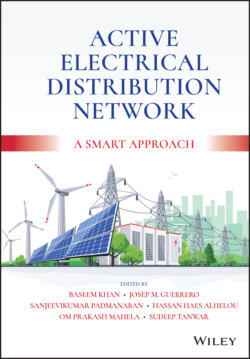Читать книгу Active Electrical Distribution Network - Группа авторов - Страница 65
3.3.1.8 Impacts of Distributed Generator Insertion
ОглавлениеContinuously growing energy requirements resulting due to industrialization, environmental concerns with diminishing fossil fuel resources, network congestion as a result of overburdened lines, and declining technical performance are the key motivating factors for the day-to-day increase in integration of both renewable as well as non-renewable distributed generation (DG) units and transition of the prevailing power systems into restructured and advanced systems. Improving the technological and economic outcomes as a result of DG allocation is the biggest challenge for distribution network operators (DNOs) for both types of distributed generators. Distribution system engineers showed strong interest in these tiny energy sources due to their technical, economic, and environmental enticements. Its impending assistance includes improved system reliability, greenhouse gas emissions, and energy loss reductions [23]. However, the increased rate of DG deployment provides a prime challenge to distribution network operators because traditional distribution networks are not designed to connect power generation facilities on their doorsteps. With the integration of DGs in these passive networks, wide ranges of alternations and sometimes parameter violations result in variability and uncertainty in the operation of renewable energy resources (RERs). It has been found that renewable DGs reveal many associated power quality (PQ), characteristics hampering, and performance violation challenges to the operators. Power quality is one of the most significant characteristics of renewable DG systems because today’s loads are excessively sensitive to PQ disturbances. Therefore, the need for innovative power quality improvement techniques becomes a foreseeable feature of the restructured power system [24].
